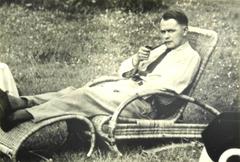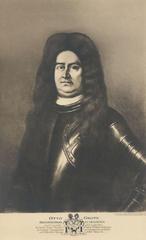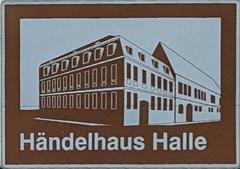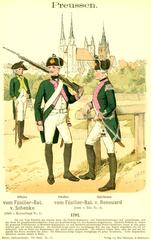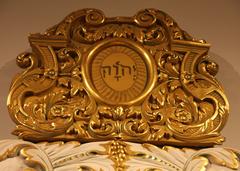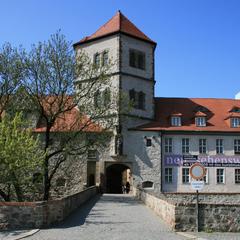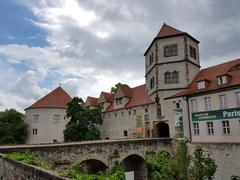Halle-Saale-Schleife: Visiting Hours, Tickets, and a Comprehensive Guide to Halle’s Historic Sites
Date: 15/06/2025
Introduction
The Halle-Saale-Schleife in Halle (Saale), Saxony-Anhalt, Germany, is a unique blend of motorsport history, cultural heritage, and scenic natural beauty. Established in 1950, this legendary motorsport circuit became an East German icon, hosting major motorcycle and automobile events that drew crowds in the tens of thousands. Today, the site and its surrounding Peißnitzinsel park invite visitors to explore its rich past, enjoy recreational activities, and discover Halle’s vibrant historical and cultural scene (Motorrennsportarchiv; Wikipedia DE; Halle im Bild).
This guide provides detailed information on the Halle-Saale-Schleife’s history, current visitor experience, practical tips, and nearby attractions—ideal for motorsport fans, history buffs, and travelers seeking a unique perspective on Halle.
Table of Contents
- Origins and Motorsport Legacy
- Transformation and Modern Use
- Visitor Information
- Top Nearby Attractions
- Frequently Asked Questions (FAQ)
- Visitor Tips and Recommendations
- Final Thoughts and Call to Action
- References
Origins and Motorsport Legacy
Early Beginnings
The Halle-Saale-Schleife’s roots date to the 1920s, with races like the “Großer Preis von Halle” and the “Salzgrafenrennen” taking place on temporary roads. Following World War II, the city’s motorsport community built a permanent circuit near the picturesque Peißnitzinsel, opening on June 10, 1950 after a rapid three-month construction (Motorrennsportarchiv; Wikipedia DE).
Circuit Layout and Technical Features
The original track utilized public roads and parkland, stretching 5.256 km with a shorter 2.66 km variant, known as the “Kleine Schleife.” Its challenging mix of straights and curves demanded technical skill and innovation, especially after the addition of a distinctive grass track in 1954. Over the years, safety improvements included relocating the start/finish line and modifying curves (Autosport Forum).
Motorsport Glory: 1950–1967
The circuit was a staple of East German motorsport, hosting at least 24 major events and regularly attracting tens of thousands of spectators. Races included motorcycles, Formula cars, and sports cars—making the Schleife a social and sporting highlight of the GDR era (Motorrennsportarchiv). The events fostered community pride and economic activity, cementing Halle’s reputation in motorsport history.
Transformation and Modern Use
Decline and Closure
Urban expansion and the construction of Halle-Neustadt led to the circuit’s closure in 1967. The land was repurposed for housing, and the track infrastructure was removed. Nevertheless, the memory of the Schleife endured in local culture (Halle im Bild).
Revival and Heritage Events
In 2010, the circuit briefly returned to life with the 23rd Halle-Saale-Schleife-Rennen, featuring a 2.69 km layout and safety upgrades. The event drew over 6,000 spectators and vintage vehicles, but further revival was hampered by financial and regulatory challenges, as well as flood protection priorities following the 2013 high water event.
Today: A Public Recreational Area
The former circuit route is now a scenic part of Peißnitzinsel park, open year-round for walking, cycling, and leisure. Historical markers and interpretive signage commemorate its racing past, while the site remains a focal point for occasional heritage events and community gatherings (Halle im Bild; Discover Germany).
Visitor Information
Visiting Hours and Admission
- General Access: The Halle-Saale-Schleife and Peißnitzinsel park are open to the public year-round with no admission fee.
- Guided Tours: Available occasionally via local motorsport clubs or the Halle tourism office. Special events may require tickets—check local event calendars for details.
- Best Times to Visit: Spring to autumn, especially during festivals or heritage events.
Accessibility
- Transport: Easily accessible via public transport (trams and buses from Halle Hauptbahnhof to stops like “Peißnitzinsel” and “Burg Giebichenstein”). Parking is available near Gimritzer Damm.
- Mobility: The park features flat, paved paths suitable for wheelchairs, strollers, and bicycles.
- Amenities: Cafés (notably Peißnitzhaus), rest areas, and playgrounds are available on Peißnitzinsel.
Photographic and Recreational Opportunities
- Scenic Views: The Saale River, historic circuit markers, and park landscapes offer excellent photography spots.
- Recreation: Walking, jogging, cycling, and seasonal boat rentals are popular activities.
Top Nearby Attractions
- Giebichenstein Castle: 11th-century fortress with panoramic views and art exhibitions. Grounds are typically free to access; entrance fees apply for special exhibits (wildtrips.net).
- Moritzburg Castle and Art Museum: Renaissance castle with a renowned art collection. Open Tuesday to Sunday, 10:00–18:00; admission approx. €8 (bachtrack.com).
- Halle Historic Center: Explore the Market Square, five towers, shops, and the Francke Foundations (Discover Germany; Try Travel).
- Peißnitzexpress Miniature Railway: Family-friendly open-air train on Peißnitzinsel.
- Handel Festival: Annual music festival in June celebrating George Frideric Handel with riverfront concerts (bachtrack.com).
Frequently Asked Questions (FAQ)
Q: Is there an entrance fee to visit the Halle-Saale-Schleife?
A: No, access to the site and park is free year-round.
Q: Are guided tours available?
A: Yes, occasionally, through local tourism offices or motorsport clubs. Check schedules in advance.
Q: What are the site’s opening hours?
A: Outdoor areas are open year-round; museums and castles typically operate Tuesday–Sunday, 10:00–18:00.
Q: Is the area family-friendly?
A: Yes, with playgrounds, open spaces, and cycling paths suitable for all ages.
Q: How do I reach the Halle-Saale-Schleife by public transport?
A: Use trams 2, 5, or 7 from Halle Hauptbahnhof or Marktplatz to stops near Peißnitzinsel or Burg Giebichenstein.
Q: Are there annual motorsport events?
A: Regular racing ended in 1967, but occasional vintage car meetings and commemorative events occur.
Q: Is it accessible for people with disabilities?
A: Most paths are paved and accessible, though some terrain may be uneven.
Visitor Tips and Recommendations
- Plan your visit during spring or summer for the liveliest atmosphere and best weather.
- Wear comfortable shoes—there are extensive walking and cycling paths.
- Bring a camera to capture the river views, castles, and unique historical features.
- Check the Official Halle Tourist Information for event updates, maps, and guided tours.
- Respect conservation zones and keep to marked paths to protect the local ecosystem (wordstowings.de).
Final Thoughts and Call to Action
The Halle-Saale-Schleife is more than a former racetrack—it’s a living narrative of Halle’s resilience, community identity, and passion for innovation. Whether you are tracing the circuit’s historic route, joining a heritage event, or enjoying the riverside scenery, the experience offers a deep connection to the city’s past and present.
Plan your visit today and immerse yourself in Halle’s motorsport legacy and cultural riches. For the latest updates, downloadable guides, and multimedia content, download the Audiala app and connect with Halle’s tourism community. Share your experiences and discover more about this remarkable city!
References
- Motorrennsportarchiv: Halle-Saale-Schleife
- Wikipedia DE: Halle-Saale-Schleife
- Halle im Bild: Halle-Saale-Schleife
- Discover Germany: Halle
- wildtrips.net: Halle, Germany—what to visit
- bachtrack.com: Handel Festival Halle
- wordstowings.de: Tipps für Halle an der Saale
- Try Travel: Things to do in Halle
- Halle Tourist Information

